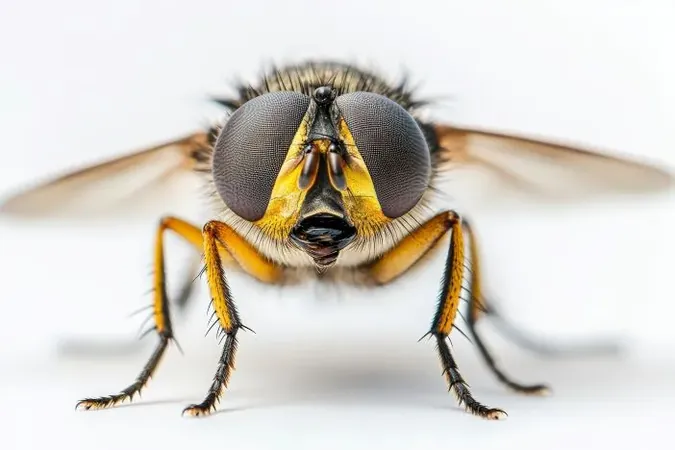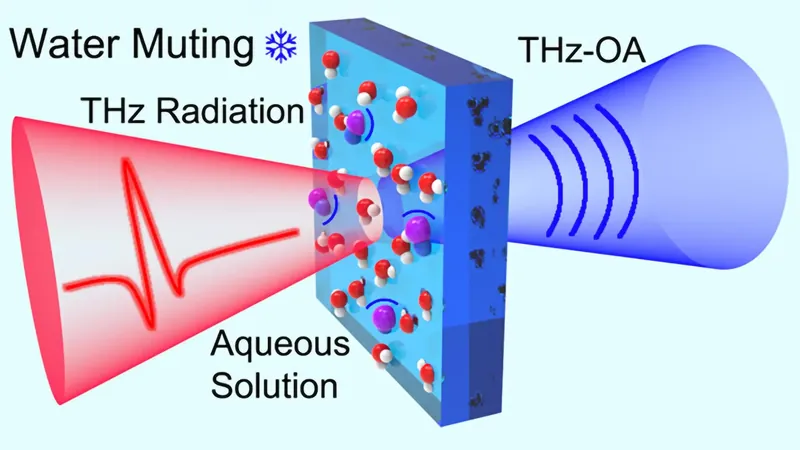
Revolutionary Insect-Eye Inspired Camera from South Korea: A Game Changer for High-Speed Imaging!
2025-01-20
Author: Jacob
Introduction to the Insect-Eye Inspired Camera
Researchers in South Korea have made a groundbreaking advancement in imaging technology with the development of a high-speed camera that draws inspiration from the incredible visual systems of insect eyes. This innovative camera addresses common limitations such as frame rate and light sensitivity that are prevalent in traditional high-speed cameras.
Key Features and Innovations
Measuring less than one millimeter in thickness, this compact and affordable camera can capture a staggering 9,120 frames per second, all while maintaining clarity in low-light environments. This remarkable ability provides a significant leap in the field of high-speed imaging, particularly in scenarios where light is scarce.
Conventional high-speed cameras are often limited in their sensitivity due to the trade-off between frame rate and light collection time. For instance, while some of the fastest cameras in the world can shoot up to an astonishing 156.3 trillion frames per second, they struggle to maintain clarity under low-light conditions. This is largely because the faster the camera operates, the less time it has to gather light, leading to decreased image quality.
The Inspiration from Insects
Insects, however, have evolved a remarkable solution through their compound eyes, which detect motion in a parallel fashion. This adaptation enhances their sensitivity in dim settings by integrating signals over time. Inspired by this mechanism, a dedicated research team from the Korea Advanced Institute of Science and Technology (KAIST) designed a camera that mimics the multi-faceted structure of insect eyes. As a result, this bio-inspired camera is capable of ultra-high-speed imaging with impressive sensitivity.
Technical Advancements
Utilizing multiple optical channels and a process known as temporal summation, the camera collects frames from different time intervals simultaneously. Such a compound-eye-like structure allows it to accumulate light over overlapping periods for each frame, significantly boosting the signal-to-noise ratio. Recent tests have demonstrated its capabilities, revealing that this cutting-edge camera can detect objects that are up to 40 times dimmer than those visible with conventional high-speed cameras.
Conclusion and Future Applications
The research team has also employed an innovative channel-splitting technique to further enhance the camera’s speed, making it thousands of times faster than typical image sensors used today, particularly in industries such as packaging. To ensure the clarity of the images captured, they implemented a compressed image restoration algorithm that eradicates blur caused by frame integration, resulting in sharp, high-definition images.
The potential applications for this insect-eye inspired technology are vast. The team aims to advance the development of sophisticated image processing algorithms for 3D imaging and super-resolution techniques, eyeing possibilities in sectors like biomedical imaging, mobile technologies, and consumer camera systems.
Expert Insights
According to Hyun-Kyung Kim, a doctoral student in KAIST's Department of Bio and Brain Engineering and the lead author of the study, “We have experimentally validated that the insect-eye-inspired camera delivers outstanding performance in high-speed and low-light imaging despite its small size. This camera opens up possibilities for diverse applications in portable camera systems, security surveillance, and medical imaging.”
Conclusion
With this remarkable technological breakthrough, South Korea is positioned to revolutionize imaging capabilities across numerous fields, providing a tool that could significantly enhance how we capture fast-moving, low-light scenarios. Stay tuned as this innovation may lead to the next generation of imaging solutions!









 Brasil (PT)
Brasil (PT)
 Canada (EN)
Canada (EN)
 Chile (ES)
Chile (ES)
 Česko (CS)
Česko (CS)
 대한민국 (KO)
대한민국 (KO)
 España (ES)
España (ES)
 France (FR)
France (FR)
 Hong Kong (EN)
Hong Kong (EN)
 Italia (IT)
Italia (IT)
 日本 (JA)
日本 (JA)
 Magyarország (HU)
Magyarország (HU)
 Norge (NO)
Norge (NO)
 Polska (PL)
Polska (PL)
 Schweiz (DE)
Schweiz (DE)
 Singapore (EN)
Singapore (EN)
 Sverige (SV)
Sverige (SV)
 Suomi (FI)
Suomi (FI)
 Türkiye (TR)
Türkiye (TR)
 الإمارات العربية المتحدة (AR)
الإمارات العربية المتحدة (AR)